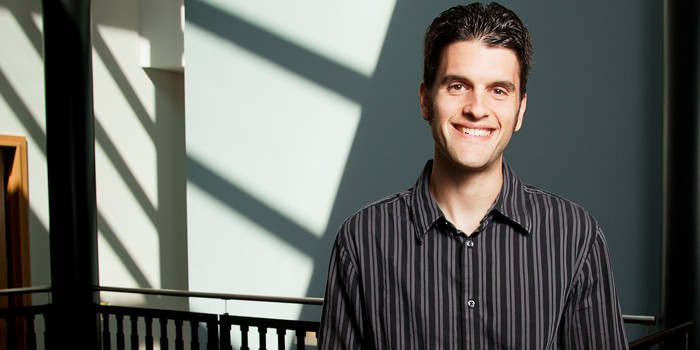URBANA, Ill. – As couples grow old together, their interdependence heightens. Often, they become each other’s primary source of physical and emotional support. Long-term marriages have a profound impact on health and well-being, but benefits depend on relationship quality.

Credit: College of ACES, University of Illinois.
URBANA, Ill. – As couples grow old together, their interdependence heightens. Often, they become each other’s primary source of physical and emotional support. Long-term marriages have a profound impact on health and well-being, but benefits depend on relationship quality.
A new study from the University of Illinois examines the dynamics of long-term relationships through spatial proximity. The researchers find that when partners are close to each other, their heart rates synchronize in complex patterns of interaction.
“Relationship researchers typically ask people how they’re doing and assume they can recall properly and give meaningful answers. But as couples age and have been together for a long time, they laugh when we ask them how satisfied or how committed they are. When they have been married for 30 or 40 years, they feel that indicates commitment in itself,” says Brian Ogolsky, associate professor in the Department of Human Development and Family Studies at the U of I and lead author on the study.
“We were looking for more objective ways to measure relationship dynamics, and we know that being around other people has psychological benefits. So, physical proximity seemed liked a strong candidate.”
But just being close to another person isn’t always beneficial; it depends on the nature of the interaction, Ogolsky points out. Closeness in the context of a conflict is very different from closeness in the context of a loving interaction. Similarly, changes in heart rate can be positive or negative.
“We’re not focusing on cause and effect, but on co-regulation, which happens when heart rates move in a synchronous pattern. That is, when the partners are close, their heart rate patterns indicate an interaction that is collectively meaningful in some way.”
The study included 10 heterosexual, married couples, ages 64 to 88, who had been in their relationships from 14 to 65 years. The researchers followed the couples for two weeks, continuously tracking their heart rates and their proximity to each other when at home.
Participants wore a Fitbit measuring their heart rate. They also wore a small proximity-sensing device. The researchers installed sensors in the home that allowed them to monitor the devices and observe in real time how physically close the spouses were to each other. They could then correlate all three measures – each partner’s heart rate and the couple’s proximity – in real time.
The researchers called the couples in the morning to remind them to put on the Fitbit and tracking device, and again in the evening for a survey about their health and well-being as well as their relationship dynamics throughout the day.
“Our first step was to see if heart rate and proximity are correlated over time. We looked at the husband’s heart rate with proximity, the wife’s heart rate with proximity, and the two heart rates with each other,” Ogolsky says.
“We also wanted to know if all three time-series worked together to give us unique information. Can we use any of them to predict the others? And the answer is yes. All three time-series need to be included for us to be able to predict any one of them well.”
The findings indicated a lead-lag relationship in heart rate synchronization, where one partner leads and the other follows. Sometimes the wife’s heart rate would lead the change and other times the husband’s heart rate would change and the wife’s would follow.
“This suggests a delicate balance. When one partner triggers the other partner, they start a unique couple-level dance that affects their physiology and their patterns throughout the day,” Ogolsky states.
Because of the small number of participants, the study did not include comparisons between couples. But even within the couples, no clear patterns emerged.
“We found each day is a unique context that changes depending on circumstances. Couple interactions, their attitudes, behaviors, whether they’re close to each other or far away, change all the time. Even across 14 days, couples are not consistent enough in these kinds of objective patterns to allow us to make any couple-level conclusions. We can make only make day-level predictions.”
Ogolsky notes this finding is an important contribution to relationship research, which usually relies on drawing conclusions across couples.
“If we really want to understand the unique patterns of interaction that happen within couples, we need to start focusing our attention on micro processes; the small interaction patterns that accumulate over a day. Those tell us about the nature of how couples’ interactions play out from moment to moment.”
The Department of Human Development and Family Studies is in the College of Agricultural, Consumer and Environmental Sciences, University of Illinois.
The paper, “Spatial proximity as a behavioral marker of relationship dynamics in older adult couples,” is published in the Journal of Social and Personal Relationships. [https://doi.org/10.1177/02654075211050073]. Authors include Brian Ogolsky, Shannon Mejia, Alexandra Chronopoulou, Kiersten Dobson, Christopher Maniotes, TeKisha Rice, Yifan Hu, Jaclyn Theisen, and Carolina Carvalho Manhães Leite.
This work was supported by the Center for Social and Behavioral Science and National Institute of Food and Agriculture grant number 793-349.
Journal
Journal of Social and Personal Relationships
DOI
10.1177/02654075211050073
Method of Research
Observational study
Subject of Research
People
Article Title
Spatial proximity as a behavioral marker of relationship dynamics in older adult couples
Article Publication Date
11-Oct-2021





